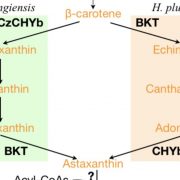
An Alternative Route for Astaxanthin Biosynthesis in Green Algae
Blog, Plant Physiology, Plant Physiology: News and Views, ResearchTianhu Sun
ORCID ID: 0000-0002-2513-1387
Plant Breeding and Genetics Section, School of Integrative Plant Science, Cornell University, Ithaca, New York 14853
[email protected]
Astaxanthin is the reddish carotenoid pigment that gives color to shrimp, salmon, and flamingo. However, these animals…

Tomatoes turn pale in the heat: high temperature reduces red and green pigmentation via phytochromes
Blog, Plant Physiology, Plant Physiology: News and Views, ResearchThe gardeners among us know that direct sunlight is a prerequisite to obtain full-sized, bright red tomato (Solanum lycopersicum) fruits. Indeed, light increases the accumulation of yellow and red carotenoid pigments, particularly lycopene, in ripe tomato fruits while it also boosts chlorophyll levels…
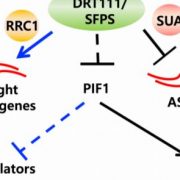
SPLICEd in the Seeds: Integration of ABA and Light Signaling in Arabidopsis
Blog, Plant Physiology, Plant Physiology: News and Views, ResearchDhineshkumar Thiruppathi 1,2
ORCID ID: 0000-0002-2018-3356
Donald Danforth Plant Science Center,
Saint Louis, Missouri 63132
1Author for contact: [email protected]
2Lead author
Plant development and adjustment to the environment require not only tight regulation of core…
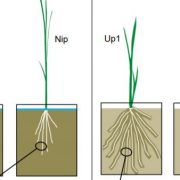
Trapped In the Rhizosheath: Root-Bacterial Interactions Modulate Ethylene Signaling
Blog, Plant Physiology, Plant Physiology: News and Views, ResearchAuthor: Sjon Hartman 1,2
ORCID: 0000-0002-6709-6436
1 Plant Ecophysiology, Institute of Environmental Biology, Utrecht University, Padualaan 8, 3584 CH, Utrecht, The Netherlands
2 Corresponding author contact: [email protected]
Even moderate droughts can greatly limit plant performance…
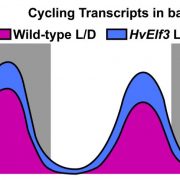
The rhythm of the light: how light and the clock drive cycling of transcript levels in barley
Blog, Plant Physiology, Plant Physiology: News and Views, ResearchCircadian rhythms are ubiquitous among living things. A core set of so-called clock genes and their products assemble an oscillatory network that provides a rhythm to anticipate dawn and dusk (Hsu and Harmer, 2014). The circadian clock regulates the day/night rhythms of plants and light itself has many…
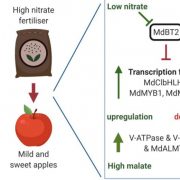
Sweet or Sour? Important Link between Nitrate Signalling and Malate Accumulation Identified in Apple
Blog, Plant Physiology, Plant Physiology: News and Views, ResearchAuthor: Stefanie Wege
[email protected]
ORCID: 0000-0002-7232-5889
Affiliation: ARC Centre of Excellence in Plant Energy Biology, Plant Research Centre,
School of Agriculture, Food and Wine, Waite Research Institute, University of Adelaide, Waite Campus, Glen Osmond 5064, South…

To grow or defend? More on the plant cornelian dilemma
Blog, Plant Physiology, Plant Physiology: News and Views, ResearchAuthor
Anne-Sophie Fiorucci
[email protected]
Affiliation
Centre for Integrative Genomics, Faculty of Biology and Medicine, Génopode Building, University of Lausanne, CH-1015 Lausanne, Switzerland.
ORCID number
0000-0002-3254-5967
Growth and defense are usually opposed…

Remorins: essential regulators in plant–microbe interaction and cell death induction
Blog, Plant Physiology, Plant Physiology: News and Views, ResearchProgrammed cell death (PCD) is a genetically controlled process triggered by developmental or environmental cues. Plant–microbe interactions often lead to PCD in plant host cells, triggered by the hypersensitive response. Plants may recognize microbes through receptor-like kinases in the plasma membrane,…
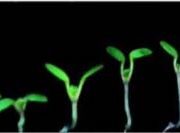
Gearing Up the Clock of Hypocotyl Growth!
Blog, Plant Physiology, Plant Physiology: News and Views, ResearchTo anticipate daily changes imposed by Earth's rotation, organisms from all domains of life have evolved an endogenous 24-h timer with daily rhythmic functions: the circadian clock. In plants, the first organisms where circadian dynamics were observed, the circadian clock processes daylength information…

